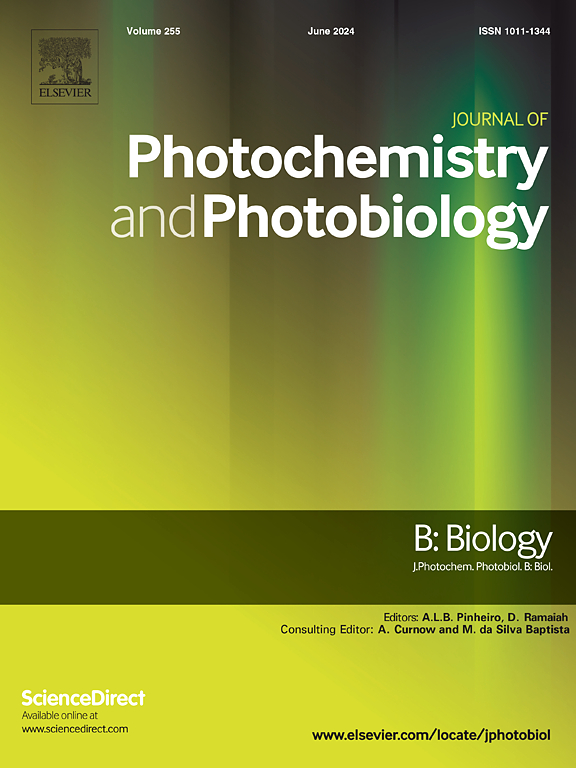Milk-derived exosome-loaded SS31 as a novel strategy to mitigate UV-induced photodamage in skin
IF 3.7
2区 生物学
Q2 BIOCHEMISTRY & MOLECULAR BIOLOGY
Journal of photochemistry and photobiology. B, Biology
Pub Date : 2025-02-13
DOI:10.1016/j.jphotobiol.2025.113125
引用次数: 0
Abstract
It is widely recognized that ultraviolet (UV) radiation primarily catalyses photodamage in the skin by generating reactive oxygen species (ROS). In this study, we developed a novel antioxidant complex, Exo-SS31, by loading the antioxidant peptide SS31 (also known as MTP-131, elamipretide) into milk-derived exosomes. Our findings indicate that Exo-SS31 is an effective antioxidant capable of mitigating Human dermal fibroblast (HDF) damage induced by ultraviolet exposure, suppressing ROS production, and achieving greater therapeutic efficacy than SS31 alone. This complex can regulate the levels of superoxide dismutase (SOD) and glutathione (GSH) within the skin, inhibit the expression of proteins in pathways such as pMAPK and AP-1 triggered by UV radiation, and reduce the expression of the matrix metalloproteinases MMP1 and MMP3. Through these mechanisms, Exo-SS31 effectively prevents collagen degradation in the dermis and inhibits ultraviolet-induced photodamage. The use of milk-derived exosomes as carriers for antioxidant peptides represents a promising strategy to increase the bioavailability of peptide-based therapeutics.

乳源性外泌体负载SS31作为减轻紫外线引起的皮肤光损伤的新策略
人们普遍认为,紫外线(UV)辐射主要通过产生活性氧(ROS)来催化皮肤的光损伤。在这项研究中,我们通过将抗氧化肽SS31(也称为MTP-131, elamipretide)装载到牛奶衍生的外泌体中,开发了一种新的抗氧化复合物Exo-SS31。我们的研究结果表明,Exo-SS31是一种有效的抗氧化剂,能够减轻紫外线照射引起的人真皮成纤维细胞(HDF)损伤,抑制ROS的产生,并且比单独SS31具有更高的治疗效果。该复合物可以调节皮肤内超氧化物歧化酶(SOD)和谷胱甘肽(GSH)的水平,抑制紫外线辐射触发的pMAPK和AP-1等通路中蛋白质的表达,并降低基质金属蛋白酶MMP1和MMP3的表达。通过这些机制,Exo-SS31有效地阻止真皮胶原降解,抑制紫外线引起的光损伤。使用牛奶衍生的外泌体作为抗氧化肽的载体代表了一种有希望的策略,以提高基于肽的治疗方法的生物利用度。
本文章由计算机程序翻译,如有差异,请以英文原文为准。
求助全文
约1分钟内获得全文
求助全文
来源期刊
CiteScore
12.10
自引率
1.90%
发文量
161
审稿时长
37 days
期刊介绍:
The Journal of Photochemistry and Photobiology B: Biology provides a forum for the publication of papers relating to the various aspects of photobiology, as well as a means for communication in this multidisciplinary field.
The scope includes:
- Bioluminescence
- Chronobiology
- DNA repair
- Environmental photobiology
- Nanotechnology in photobiology
- Photocarcinogenesis
- Photochemistry of biomolecules
- Photodynamic therapy
- Photomedicine
- Photomorphogenesis
- Photomovement
- Photoreception
- Photosensitization
- Photosynthesis
- Phototechnology
- Spectroscopy of biological systems
- UV and visible radiation effects and vision.

 求助内容:
求助内容: 应助结果提醒方式:
应助结果提醒方式:


